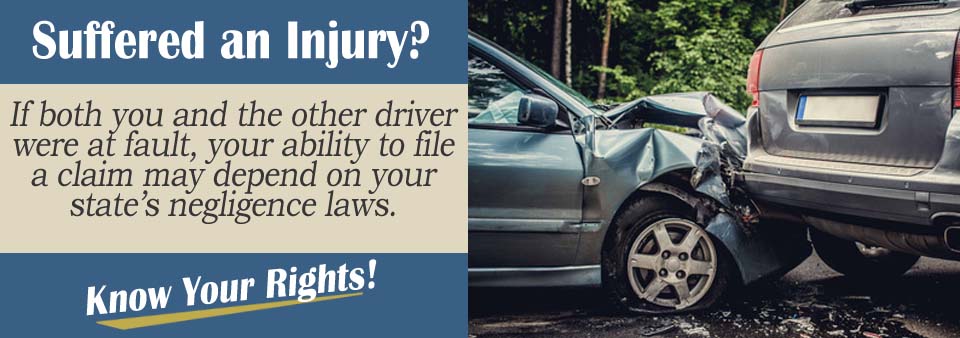Many times, fault is not necessarily just placed on one of the drivers. Both drivers involved in an accident can be deemed negligent and at fault.
This situation happens more often than not. How do you handle these types of situations, and whose insurance pays for any personal injury claims?
Regardless of fault, being in a car crash can be confusing and it can be hard to know what's really going on as far what your liability would be and how your insurance could be involved.
We reached out to attorney Alaina Sullivan for some clarification, and this was her response:
Determining Fault
Like so many things in the legal world, fault is not clear-cut. It is possible that one driver is obviously at fault, but in most situations, both drivers are at fault in some respects. It depends on the level of negligence each driver demonstrates in the accident that determines where you can collect damages and how much.

States handle this situation differently with one of two rules: comparative negligence of contributory negligence. Some states also take a modified approach by handling these situations under modified comparative or modified contributory negligence rules.
Contributory Negligence
The rule of contributory negligence says that if you contribute in any way to your own injury through your own negligence, you cannot hold anyone else responsible for the accident. With pure contributory negligence, that applies even if you are only one percent at fault.
You are completely barred from seeking damages from the other driver. This rule is extremely harsh, so many states take a modified approach establishing a threshold of fault allowing you to seek damages.
Comparative Negligence
Comparative negligence is much less harsh than contributory negligence. Under this rule, the first test involves determining the amount or percentage of fault that belongs to each driver. The question is how much of that driver’s negligent behavior contributed to the actions causing the accident. You may be found to be only 20 percent negligent but the other driver is 80 percent negligent. In these situations, you could collect 80 percent of the damages you seek.
This percentage division is how the pure comparative negligence situation plays out; however, like with contributory negligence, some states take a modified comparative negligence approach, as well.
Modified Comparative Fault
In states that have a modified comparative fault rule, they have a set “cut-off point” when it comes to how much fault an injured driver can have to still collect from the other driver. Many states say that you can collect if you are anywhere below 50 percent at fault in the accident.
Anything above that 50 percent marker bars you from seeking compensation from the other driver. That rule applies to the other driver, as well, as a way to protect you from paying for damages when the other driver is more at fault than you are.
These rules make it easier and arguably more fair than pure comparative negligence rules.
Contact an Attorney Today
If you were at fault during a crash, you may have questions about your case, and if you might be able to file a personal injury claim against the other driver. You may want to speak with a personal injury attorney in this scenario, as they can help clarify your case and provide you with detailed information that is specific to your case.